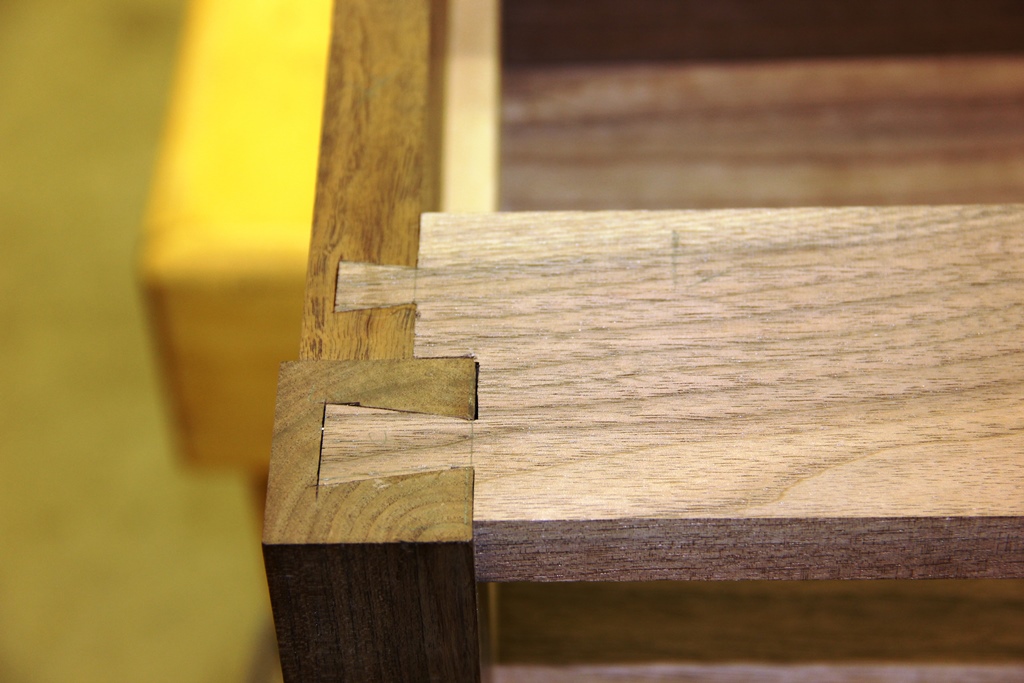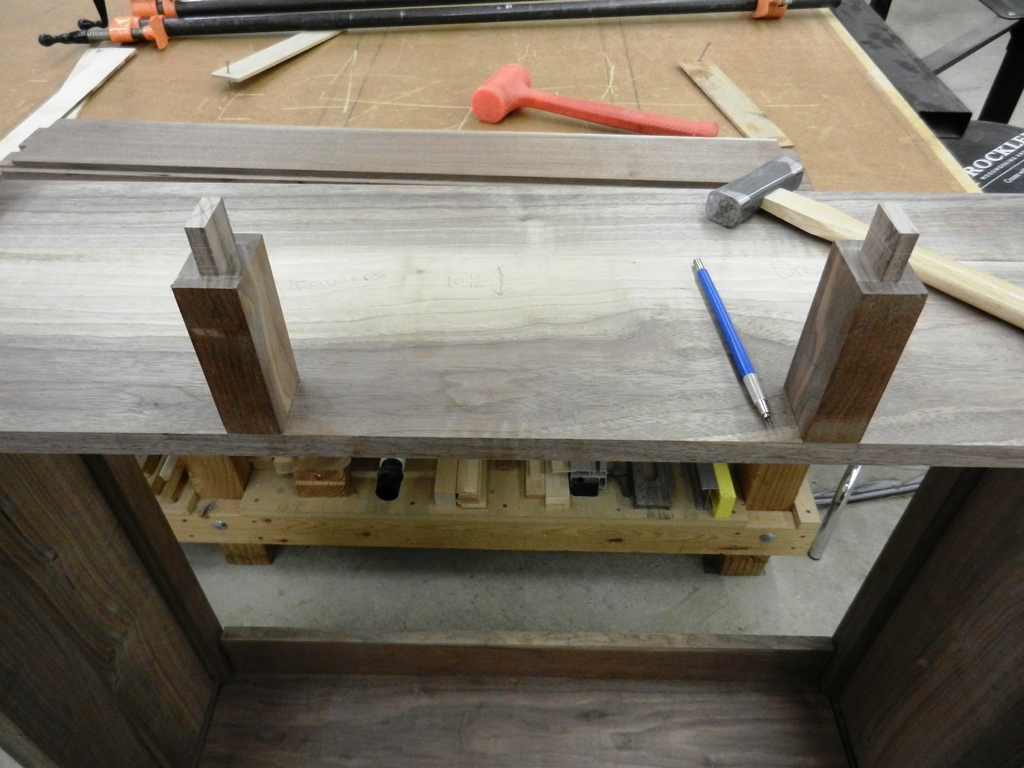Posted November 11, 2014


This stack of walnut I was working with at the time came from Missouri. It has lot of bark and sapwood as well as end checking, but the price was right. There was also considerable color variation in the heartwood, going from light to dark browns, to almost purple, depending on how each piece was resawn. I enjoy working with walnut, being a softer hardwood like cherry, but it is usually so pricey that you need to covet each and every little piece. However, with the economy of this purchase, I was able to be a little more at ease with searching through the stack for the board of choice.


In order to get to know the wood, I first built this simple sofa table, a rather basic design, but with some breadboard ends to lively things up a bit. This was when I discovered the great variation color between the outside edges of the 8/4 slabs and the interior when they were resawn.


One of these is loosely based on the Oak Drawer Bookcases from a previous project. I like the idea of incorporating drawers in the case, where possible, to give the piece a look of other than just shelves, plus the added utility of having some drawer storage. The other plan would omit the drawers but flare the legs in a Shinto style.



Instead of the mission-style cabinet ends of the Oak Drawer Bookcase, I opted for the more traditional style of raised-panel ends for both of these pieces. Upper and lower aprons are mortised into the legs and the panels and made to float into a 1/4" dado cut into the legs and aprons.



Additional mortises are cut into the legs for the back upper and lower rails, in addition to a dado into lower aprons for the bottom shelf. Another shelf will be let into the rear legs to allow for the drawers to slide on in the drawer case. These shelves are mostly free-floating to allow for seasonal wood movement. They rest in dados cut into the rear aprons and side aprons.



After the end panels are glued up, the front stretcher is cut and dovetailed into the front leg and upper apron ends. Drawer divider ends are mortised into the drawer shelf on the bottom and into the front stretcher on the top. The horizontal drawer divider is biscuted into the divider ends and mortised into the upper back apron. This case is now ready for glue up and we are ready to move on the drawers.



Drawers are maple sides with alder bottoms and walnut faces. While the maple is a little harder to plane than some other woods I might have used for drawer sides, I like the crisp look of the maple-walnut dovetails. Pieces for the top presented some challenges, as the figured pieces selected also has considerable rotted sections that needed to be removed. By cutting them out and gluing the boards back together I was able to obtain the desired color and figure. The piece was finished with several coats of wipe on oil, sanding between coats with up to 400 grit paper.
Back To Top Home